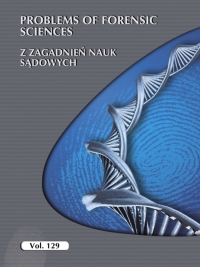Correlation of symptoms registered during blood collection from drivers who tested positive for Δ9-tetrahydrocannabinol (THC)
Correlation of symptoms registered during blood collection from drivers who tested positive for Δ9-tetrahydrocannabinol (THC)
Author(s): Wojciech LechowIcz, Joanna GierońSubject(s): Criminology, Substance abuse and addiction
Published by: Wydawnictwo Uniwersytetu Jagiellońskiego
Keywords: THC ; Marijuana; Impairment; Symptoms;
Summary/Abstract: The impact of marijuana on road safety has been the subject of many debates over the years. These debates have intensified in recent years due to initiatives carried out in several jurisdictions aimed at marketing medical cannabis. According to Polish forensic toxicologists, road safety is a key issue, especially following the conferences in November 2012 in Kraków and in 2013 in Augustów (Gieroń et al., 2013), Poland, on the determination of appropriate concentration thresholds. These thresholds, defining the limit for the ‘after use’ and ‘under the influence’ conditions, are still not unambiguous or easy to determine for the Polish government. An unambiguous assessment of the impact of a given concentration of blood THC on psychomotor performance is very difficult, and will remain so in the foreseeable future. This study used 107 randomly selected blood collection protocols, with 10 protocols for each THC concentration ranging from 1 to 10 ng/ml, on the basis of which thirteen features related to the external appearance and behaviour of the tested individuals were analysed. These features were: facial skin (pale, normal or red), slurred speech, mood and behaviour (cheerful, talkative, rowdy or reticent), heart rate, pupils (normal, dilated or contracted), reaction of pupils to light, the Romberg test, the finger-to-nose test, picking up objects from the ground and awareness of time and place. Five of the thirteen features related to the appearance and behaviour of the respondents showed no abnormalities (gait, the Romberg test, the finger-to-nose test, picking up objects from the ground, and awareness of time and place). The study found that the symptoms observed and recorded in the protocols are insufficient to make a decision about the impact of THC on psychomotor performance. The characteristic symptoms (cheerfulness and talkativeness) occurred no more frequently than in 3 out of 10 of the concentrations tested.
Journal: Problems of Forensic Sciences
- Issue Year: 2022
- Issue No: 130-131
- Page Range: 157-168
- Page Count: 12
- Language: English

